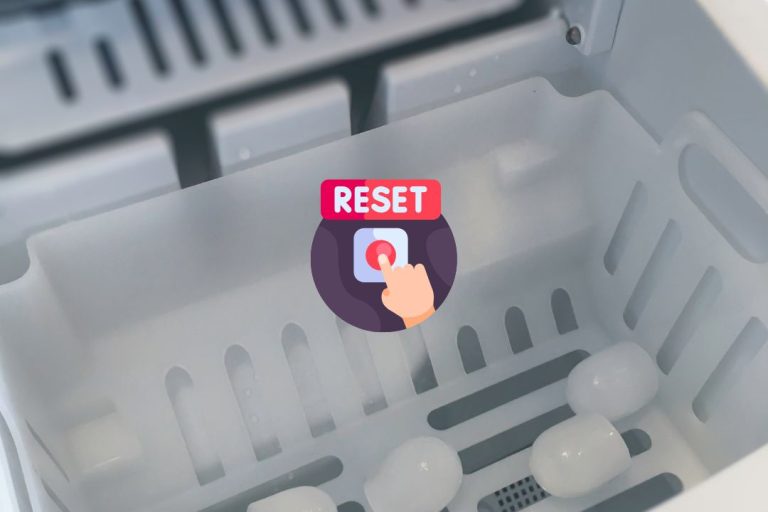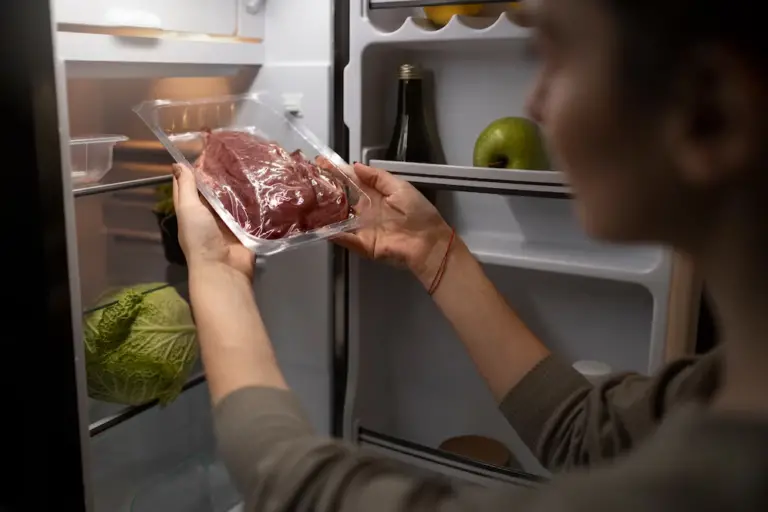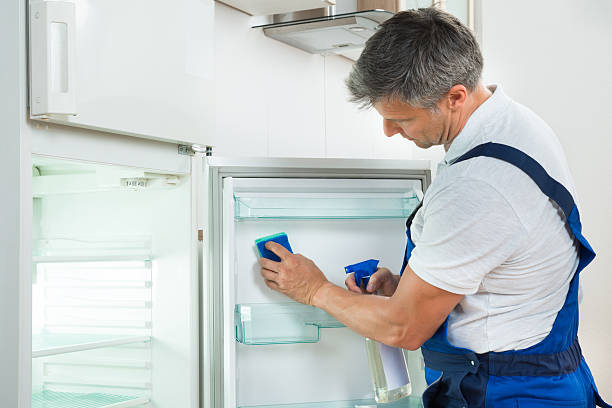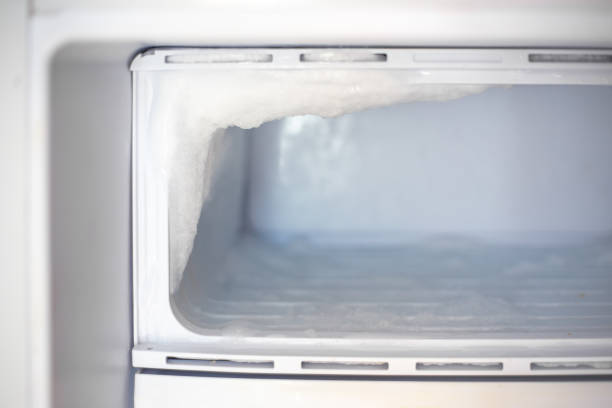How to Properly Clean Your Refrigerator for Best Performance?

Key Takeaways
- Regularly clean your fridge to ensure optimal performance, food freshness, and safety.
- Pay attention to detail, including cleaning shelves, drawers, door seals, condenser coils, and maintaining proper temperature settings.
- Organize your fridge efficiently to maximize space, airflow, and accessibility while minimizing food waste and spoilage.
A clean fridge is crucial. It’s not just about looks. It’s about efficiency and freshness. An unkempt fridge can’t do its job well. It may spoil your food.
Preventing odors is important. But it goes beyond that. Bacteria can grow in a dirty fridge. This puts your food at risk. So, we’ll guide you step by step. We’ll show you how to clean your fridge properly.
It’s all about optimal performance. First, gather your supplies. You’ll need mild detergent and warm water. Then, start by emptying your fridge. Check for any expired items.
Throw them out. Next, wipe down all surfaces. Clean shelves and drawers. Don’t forget the door seals. These can harbor dirt and grime.
Finally, restock your fridge. With a clean and organized fridge, your food stays fresh longer. You’ll enjoy peace of mind knowing your fridge is operating efficiently. Say goodbye to unpleasant odors and hello to a healthier, happier kitchen.
Step 1: Empty Your Fridge
Empty your fridge completely. Check each item’s expiration date. Anything past its prime needs to go. Don’t take chances with expired food. It could make you sick.
Toss it out without hesitation. This includes drinks too. Don’t forget to check condiments and sauces. They can expire too.
Emptying your fridge may seem like a hassle. But it’s essential for a clean and safe kitchen. Plus, it gives you a chance to organize your fridge better
Step 2: Remove Shelves and Drawers
Remove all shelves, drawers, and bins from your fridge. Take them to the sink. Wash them with warm, soapy water. Scrub away any grime or spills.
Rinse them well under running water. Make sure to remove all soap residue. Dry them thoroughly with a clean towel. Don’t put them back until they’re completely dry. Wet shelves can cause mold and mildew.
Once dry, carefully place them back into the fridge. Pay attention to their original positions. This ensures they fit correctly. Cleaning these parts may take some time. But it’s essential for a clean and hygienic fridge. Your efforts will pay off in a fresher, safer kitchen.
Step 3: Clean the Interior
Create a mixture of warm water and baking soda. Use this to wipe down the inside of your fridge. Start from the top and work your way down.
Pay extra attention to spills and sticky spots. Scrub them gently until they’re gone. Rinse the inside of the fridge with clean water.
Make sure to remove any leftover baking soda residue. Dry the interior thoroughly with a clean towel. Don’t forget to wipe down the door seals too.
They can collect dirt and grime. A clean fridge interior ensures your food stays fresh and safe. Plus, it eliminates any unpleasant odors.

Step 4: Clean the Door Seals
Clean the rubber door seals with warm, soapy water. Gently scrub away any dirt or debris. Ensure the seals are free from any obstructions.
Dirt or debris can prevent the door from sealing properly. This could lead to temperature fluctuations inside the fridge. A proper seal is essential for maintaining food freshness. Pay attention to crevices and corners where dirt may accumulate.
Rinse the door seals with clean water. Wipe them dry with a towel. Properly cleaned door seals ensure your fridge operates efficiently. It helps maintain consistent temperatures and prevents energy waste. With clean seals, you can trust that your food stays fresh longer.
Step 5: Clean the Exterior
Clean the outside of your fridge with a damp cloth and mild detergent. Start by wiping down the handles and doors. Pay attention to any fingerprints or smudges.
Gently scrub them away until the surface is clean. Use a separate cloth for the sides and top of the fridge. Wipe them down thoroughly. Rinse the cloth as needed to remove dirt and detergent residue.
Finish by drying the exterior with a clean towel. A clean exterior not only enhances the appearance of your fridge but also promotes hygiene. Plus, it prevents the buildup of dirt and grime over time. With regular cleaning, your fridge will look good as new.
Step 6: Clean the Condenser Coils
Vacuum the condenser coils situated at the back or bottom of your refrigerator. These coils gather dust and dirt over time.
This buildup can make your fridge work harder to maintain cool temperatures. Locate the coils by checking the back or bottom of your fridge. Use a vacuum cleaner with a brush attachment to gently remove the accumulated debris.
Pay close attention to any areas where dust is particularly thick. Ensure thorough cleaning to improve your fridge’s efficiency.
By cleaning the condenser coils regularly, you help prolong the lifespan of your refrigerator and reduce energy consumption. It’s a simple task that can make a significant difference in your fridge’s performance.

Step 7: Check the Temperature
After cleaning, check the temperature of your refrigerator. Ensure it’s set correctly for optimal food preservation.
The ideal temperature range for a fridge is between 37-40°F (3-4°C). Use a thermometer to check the temperature accurately. Place the thermometer in the middle of the fridge, away from the door.
Wait for a few minutes for the reading to stabilize. If the temperature falls within the recommended range, your fridge is set correctly.
If not, adjust the temperature settings accordingly. Maintaining the proper temperature ensures that your food stays fresh and safe to eat. Regular temperature checks are essential for the efficient operation of your refrigerator.
Step 8: Restock Your Fridge
Once everything is clean and dry, it’s time to return the shelves, drawers, and food to your refrigerator. Begin by placing the cleaned shelves and drawers back into their designated positions.
Ensure they fit snugly and securely. Next, organize the food items by type, such as dairy, fruits, vegetables, and beverages. Leave space between items for proper air circulation.
This helps maintain consistent temperatures throughout the fridge. Avoid overcrowding to prevent blocking airflow. Take advantage of any adjustable shelves to accommodate taller items. A well-organized fridge not only maximizes space but also makes it easier to find what you need. With everything in its place, your fridge is ready to keep your food fresh and accessible.
Conclusion
Keeping your refrigerator clean is vital for food safety and its lifespan. Follow the steps mentioned to ensure your fridge works well, keeping your food fresh and your kitchen organized.
Regular cleaning and maintenance not only enhance your refrigerator’s performance but also create a healthier space for storing food.
Take the time to clean your fridge thoroughly—it’s a small effort with significant benefits for your kitchen’s functionality and your peace of mind. So, commit to this routine, and you’ll reap the rewards of a clean and efficient refrigerator for years to come.
FAQs About Refrigerator Cleaning
Q1. How often should I clean my refrigerator?
It’s recommended to clean your refrigerator every 3-4 months, or whenever it starts to look or smell dirty.
Q2. Can I use bleach to clean my fridge?
It’s best to avoid using bleach inside your refrigerator, as it can leave behind harmful residues. Stick to mild detergents or natural cleaners like baking soda and vinegar.
Q3. Do I need to unplug my fridge to clean it?
You don’t need to unplug your fridge to clean it unless you’re cleaning the condenser coils. In that case, it’s safer to unplug the refrigerator to avoid any accidents.
Q4. How long does it take to clean a refrigerator?
Cleaning a refrigerator thoroughly usually takes about 30-60 minutes, depending on how dirty it is and how meticulous you want to be.
Q5. Why is it important to clean the condenser coils?
Cleaning the condenser coils helps improve the efficiency of your refrigerator by allowing better airflow. This can extend the life of your appliance and save energy.
Q6. Can I use a steam cleaner to clean my fridge?
While steam cleaners can be effective for removing tough stains and bacteria, it’s not recommended to use them inside your refrigerator. The heat and moisture could damage sensitive components. Stick to gentle cleaning methods instead.






